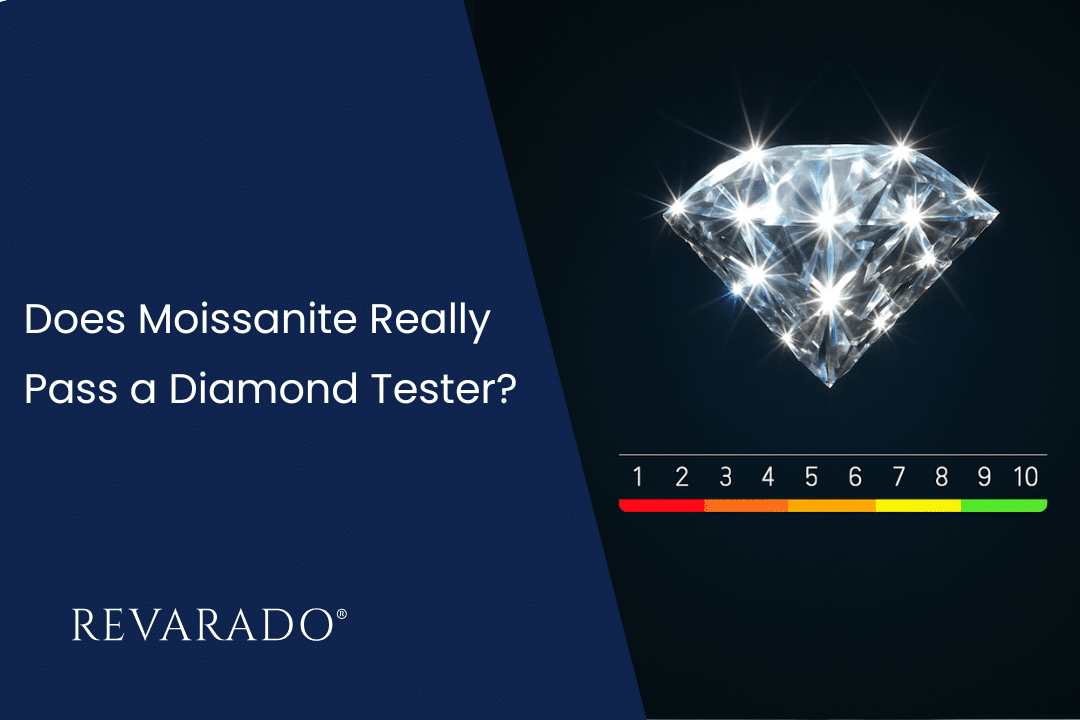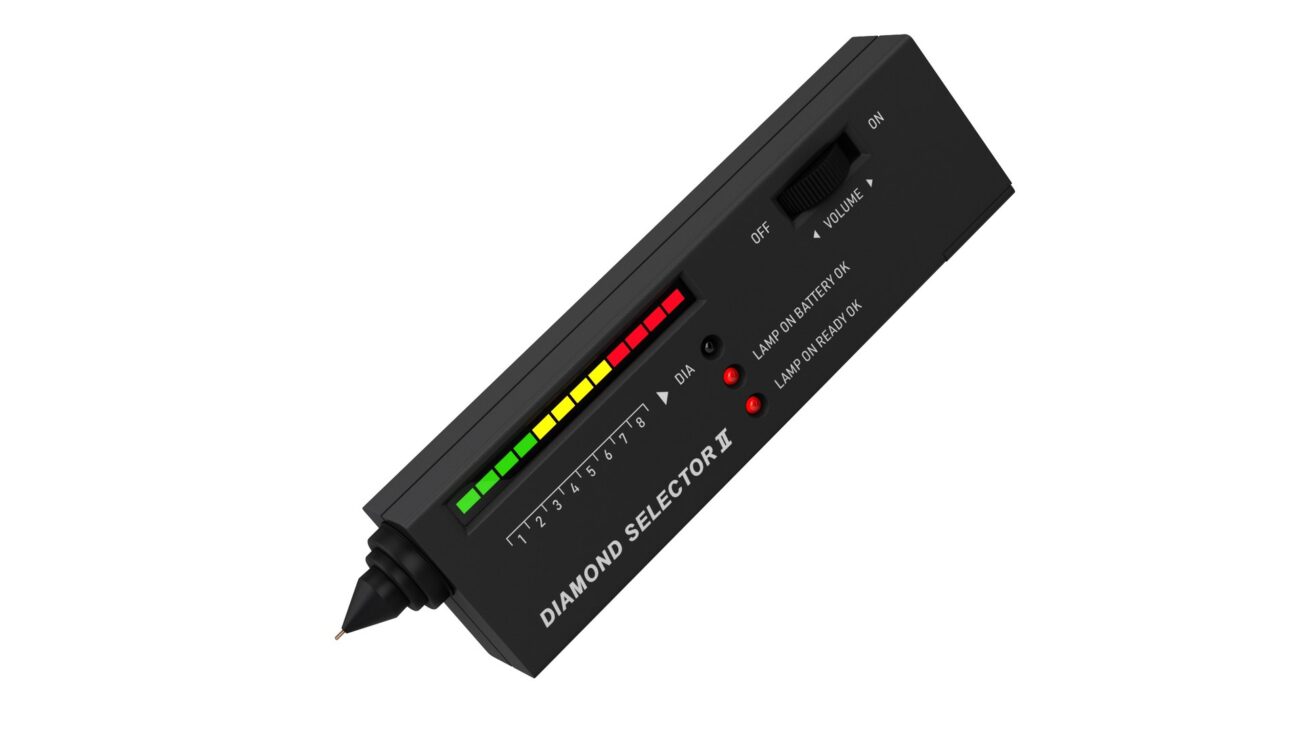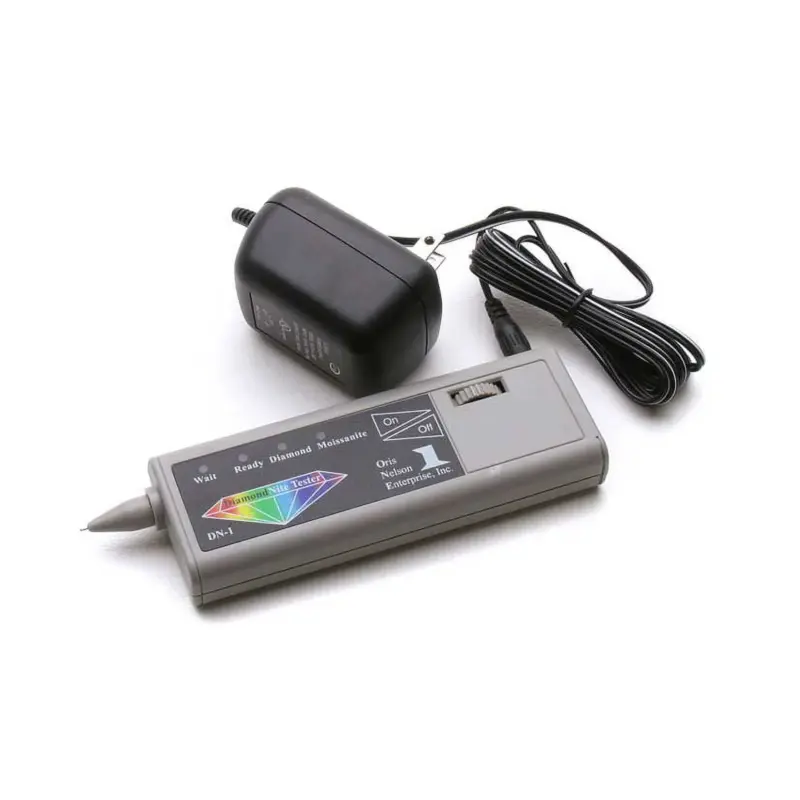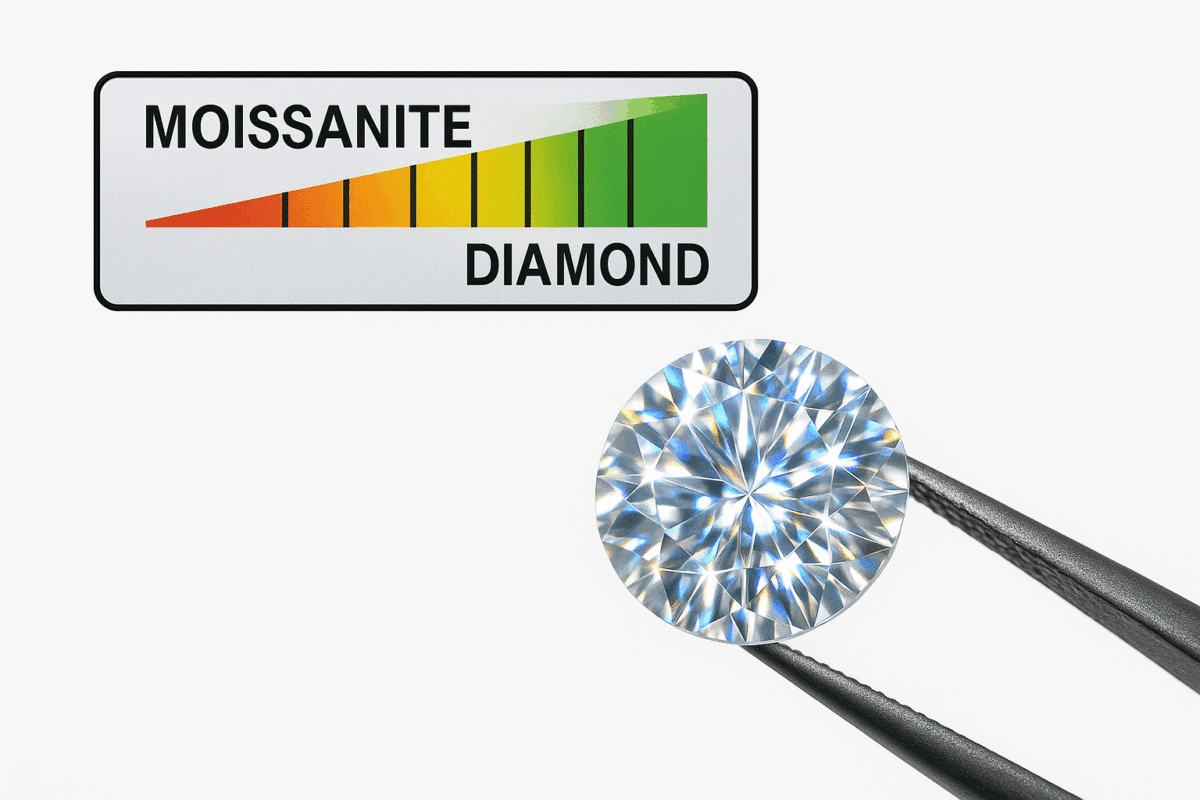Unusual Insights: Does Moissanite Pass Diamond Tester?

Moissanite – the popular diamond alternative – often sparks the question, does moissanite pass diamond tester? The short answer is yes, it can, especially with standard diamond testers. Moissanite’s physical properties are so similar to natural diamond that basic tester devices may be fooled. However, understanding how diamond testers work (and how newer models have evolved) will clarify why moissanite can “pass” as diamond and what jewelers do to tell them apart. In this in-depth guide, we’ll explain diamond tester technology, why moissanite often triggers a positive diamond reading, and how advanced testers and techniques help distinguish the two. The goal is to keep it accessible for consumers and helpful for jewelers, so let’s dive in.
How Diamond Testers Work: Thermal vs. Electrical Conductivity
A jeweler uses a handheld diamond tester pen on a ring. These portable testers typically measure the gem’s thermal conductivity (how fast it conducts heat) to identify diamonds.

Thermal conductivity testers: Most common diamond testers are pen-like devices that check how quickly a gemstone disperses heat. Diamonds are exceptional heat conductors, so when the tester’s tiny heated probe touches a real diamond, heat spreads rapidly, and the device signals a positive result (often a beep or light). If the stone conducts heat more slowly, the tester will not indicate “diamond,” suggesting the gem is something else. In short, a traditional diamond tester is essentially a heat meter—it relies on the fact that true diamonds whisk away heat much faster than imitations like cubic zirconia (CZ) or glass. This method works well to separate diamonds from low-conductivity fakes, but it has a blind spot: moissanite, which also conducts heat nearly as efficiently as diamond.

Electrical conductivity testers: To overcome that blind spot, some newer diamond testers (often called dual testers or multi-testers) also measure a stone’s electrical conductivity. Pure diamonds (with the exception of rare blue or type IIb diamonds) are excellent electrical insulators – they do not conduct electricity. Moissanite (silicon carbide), on the other hand, is a slight electrical conductor. Dual testers use this difference: after checking thermal conductivity, they apply a tiny electrical current through the gem and measure resistance. A real diamond will show virtually no electrical conductivity, whereas moissanite will register a small but distinct conductivity signal. In practical terms, if a stone shows high heat conductivity and measurable electrical conductivity, an advanced tester will identify it as moissanite rather than diamond. This two-pronged testing approach was introduced precisely because moissanite started fooling the older heat-only testers.
How Does Moissanite Pass Diamond Tester (High Thermal Conductivity)
Moissanite’s ability to “pass” as a diamond on common testers comes down to one key trait: exceptionally high thermal conductivity. When synthetic moissanite first hit the market in the 1990s, gemologists discovered its thermal properties are so close to those of diamond that standard heat probes reacted to moissanite as if it were a diamond. In fact, this was a major concern in the jewelry trade at the time – a moissanite could deceive the typical diamond tester pen by dissipating heat almost as quickly as a real diamond. Basic diamond testers simply weren’t designed with such a diamond-like simulant in mind.
The science behind this is that moissanite’s crystal structure (silicon carbide) allows heat to flow through it nearly as efficiently as through a carbon diamond. Diamond testers are calibrated to flag rapid heat flow as a “diamond” signature, so moissanite’s diamond-level heat conductivity triggers the same positive result. In other words, moissanite often tests positive on a diamond tester because it behaves like a diamond thermally. This gemstone is unique among diamond alternatives: materials like CZ or quartz conduct heat too slowly to fool a heat tester, but moissanite is an outlier with its diamond-like thermal conductivity. As a result, many moissanites will indeed pass a traditional diamond tester and be mistaken for a genuine diamond on that initial screening.
Advanced Tester Technology: Telling Moissanite from Diamond
The jewelry industry hasn’t been standing still. Once moissanite’s heat conductivity became known, newer multi-testers were developed to improve accuracy. These advanced diamond testers combine the classic thermal probe with an electrical conductivity check, usually in one device. Here’s how they work in practice: if the stone passes the thermal test (indicating “diamond”), the device immediately performs a second test by running a small electrical current. A true diamond will not conduct the electricity, confirming it as diamond, while a moissanite will conduct slightly and trigger a “moissanite” or “not diamond” alert. In just a couple of seconds, a good dual tester can thus expose moissanite that would have fooled a heat-only tester. This dual testing method has become a go-to solution for jewelers to quickly differentiate moissanites from diamonds on the spot.
However, no tester is 100% infallible. It turns out some new challenges have emerged as technology and gems evolve. For example, manufacturers of moissanite have reportedly found ways to produce stones with extremely low electrical conductivity in recent years. These ultra-low-conductivity moissanites can sometimes slip past older moissanite testers, registering as “diamond” because they don’t set off the electrical alarm. In response, the latest-generation testers have become more sensitive to pick up even faint conductivity, but it’s a cat-and-mouse game – if you use a cheap or outdated moissanite tester, it may not be reliable against the newest moissanite stones.

On the flip side, there are diamonds that can confuse an electrical test. A small percentage of natural diamonds (around 2%) are type IIb diamonds that contain boron impurities, which make them electrically conductive. These are typically blue diamonds (including some lab-grown diamonds) and they can actually register a false “moissanite” reading on a dual tester because they do conduct electricity like moissanite would. Similarly, certain lab-grown diamonds created by HPHT (High Pressure High Temperature) processes have been known to give odd readings on diamond testers due to variations in crystal structure and conductivity. The irony is that just as moissanite can test positive as diamond, a real diamond can occasionally test as if it were moissanite! This reinforces an important point: diamond testers are useful tools, but not foolproof. Jewelers and gemologists know to double-check results and not rely on one gadget alone for a definitive identification.
Tips for Accurate Identification
Because of these quirks, both consumers and jewelers should use a multi-step approach when verifying a diamond versus moissanite. Here are some tips to ensure accurate results:
- Use a modern multi-test diamond tester: A combined thermal and electrical conductivity tester is the best portable tool for a quick check. If the stone conducts heat like a diamond but also conducts electricity, the device will identify it as moissanite. Basic heat-only testers might give a false diamond positive, so a dual tester greatly improves accuracy.
- Magnify and look for double refraction: Under a 10× jeweler’s loupe or microscope, moissanite reveals a tell-tale sign – doubling of facet edges due to its birefringence (double refraction). When you look through the stone at a facet junction or the bottom (culet), moissanite may show a blurred or doubled image of the facets. Natural diamonds are singly refractive and will not show doubled facet lines. This visual inspection can quickly separate moissanite from diamond for a trained eye.
- Check the stone’s “fire” (sparkle quality): Moissanite often exhibits a more intense, rainbow-colored sparkle compared to a diamond’s balanced white-and-colored brilliance. This is because moissanite has a higher refractive index, leading to fiery flashes of color. If you notice an explosion of rainbow fire that seems more pronounced than a typical diamond, it could be a clue you’re looking at moissanite. Keep in mind, diamonds do have fire as well, just usually a bit subtler and complemented by white light sparkle.
- Try a UV light test: Some moissanite gems fluoresce under UV light differently than diamonds do. For instance, a moissanite might show a yellowish or greenish fluorescence under a UV lamp, whereas a given diamond might glow blue, or vice versa – the reactions can vary. This method is not foolproof, but it can provide another data point. (Note that many diamonds and moissanites both can fluoresce blue, so use this test only in combination with other indicators.)
- Consult a professional jeweler or gemologist: When in doubt, an experienced jeweler can perform specialized tests or send the stone to a gemological lab. Professionals might use advanced devices (like spectrometers or UV absorption testers) or simply have the expertise to identify subtleties. A certified gemologist can issue a definitive identification. If you’re a jeweler, it’s wise to train in visual identification and have a reliable tester, and if you’re a consumer, don’t hesitate to seek a second opinion for peace of mind.
By combining these approaches – high-quality testers and old-fashioned observation – one can be highly confident in telling a moissanite apart from a diamond. The main takeaway is that no single test is 100% guaranteed, but multiple tests together will virtually always reveal the truth.
Conclusion: Moissanite and Diamond Tester Results
In summary, moissanite can indeed test positive on a diamond tester under the right conditions, primarily because it conducts heat almost as well as a real diamond. A basic heat-based diamond tester will often be fooled by moissanite’s high thermal conductivity, lighting up “diamond” when the stone is in fact a simulant. This is not because the devices are broken; it’s because moissanite is that diamond-like in its properties. For jewelers and savvy buyers, the solution is to use advanced dual testers and supplementary checks to avoid any mix-ups. Modern electrical conductivity tests and other methods can quickly distinguish moissanite, ensuring that you know when a stone is the real deal or a convincing look-alike.
Ultimately, moissanite’s ability to fool a diamond tester is a testament to its quality as a simulant. It’s an affordable, durable, brilliant gemstone in its own right – so similar to diamond that even a gadget can mistake one for the other. Knowing this, jewelers approach authentication with more than one tool, and consumers can feel confident as long as they buy from reputable sources or confirm results with a professional. “Does moissanite pass diamond tester?” In many cases yes, but with the right knowledge and equipment, you won’t be fooled by this dazzling pretender.